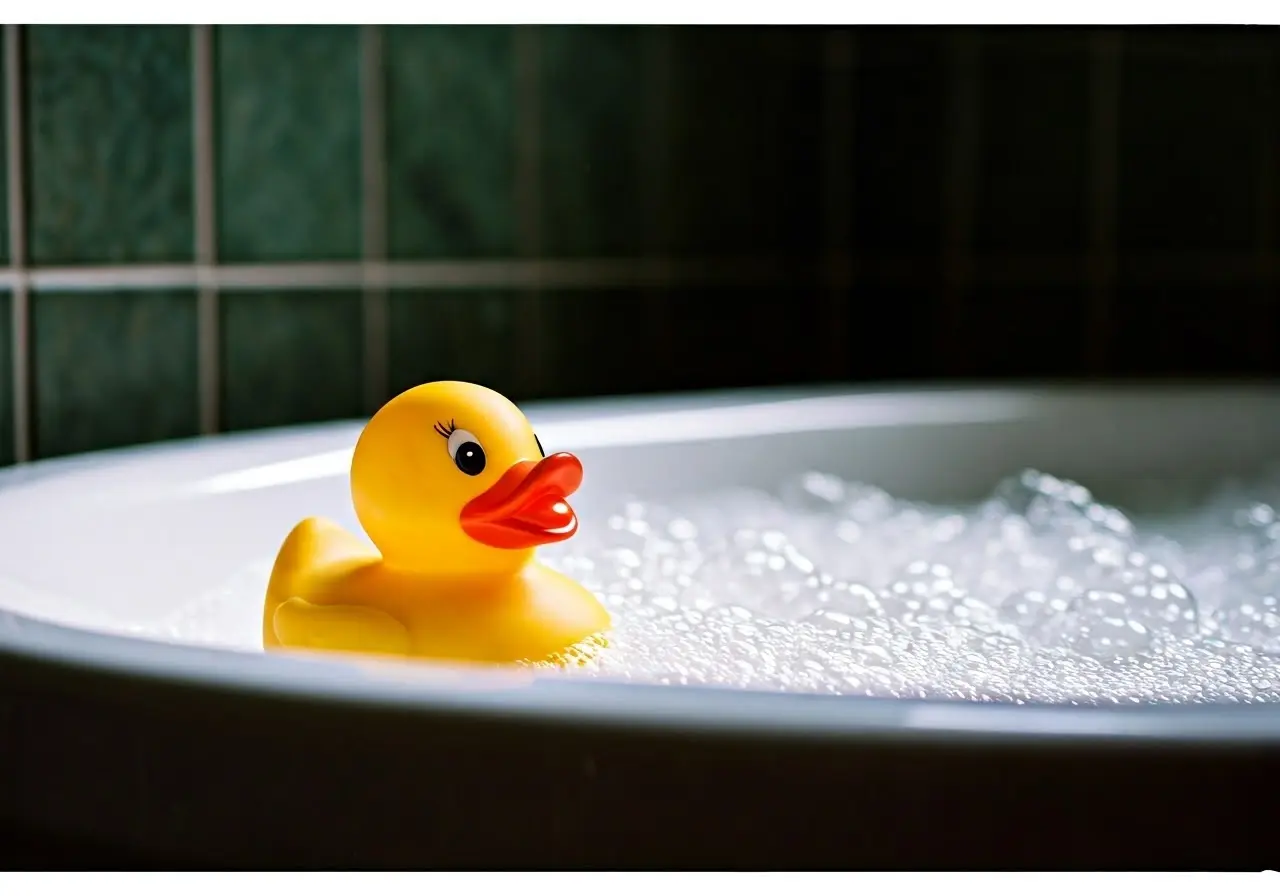Bath time can be so much more than just a part of the nightly routine. With the right activities, it can become a magical time of bonding and learning. Here are some fun and easy bath time routines that will help strengthen your relationship with your child while making sure they enjoy every second of it.
1. Splashing and Playing Together
Use the time to play and splash around in the water with your child. The simple joy of splashing can create laughter and strengthen your bond. Whether it’s making gentle waves with your hands or letting your child kick and splash to their heart’s content, the sensory experience of water play is a delight for young children. According to the Cognitive and Emotional Benefits of Bath Time, the physical sensation of water helps in calming your child and enhancing their emotional development.
Moreover, splashing around can be a great way to develop your child’s motor skills. Encouraging them to catch floating toys or splash with their hands can help improve hand-eye coordination. The act of play is also a crucial part of building strong parental bonds, as noted in Building Strong Bonds: 4 Proven Ways to Connect with Your Baby. This joyful interaction sets the tone for a positive and relaxing bedtime routine.
2. Singing Bath Time Songs
Sing familiar songs or make up silly tunes to entertain your child while they bathe. This can make bath time more enjoyable and interactive. Songs like “Rub-a-Dub-Dub” or even nursery rhymes can transform the bathing process into a fun experience. Using rich vocabulary during these songs, such as ‘splash,’ ‘bubble,’ and ‘drip,’ helps your child build their language skills early on, as suggested by Lovevery.
Singing not only keeps your child engaged but also strengthens their listening and comprehension skills. Lullabies or rhythmic tunes can bring a sense of calmness and security, making bathtime a soothing transitional activity before sleep. Research also supports that music combined with parental interaction has significant positive impacts on a child’s brain development and emotional well-being.
3. Encouraging Imaginative Play
Bring in waterproof toys like rubber ducks, boats, or even cups. Encourage your child to use their imagination and create stories or scenarios during bath time. Imaginative play not only makes bath time enjoyable but also stimulates cognitive development. According to the article ‘Easy Ways to Stimulate Your Child’s Brain During COVID!,’ introducing creative scenarios or role-playing games can significantly enhance your child’s imagination and brain development.
For instance, turning the bathtub into a pirate ship or an underwater kingdom adds an element of excitement and adventure. This method of play also serves as a great opportunity for parents to join in and bond over shared stories and creative narratives. Activities like these can turn a mundane task into a joyful and memorable experience.
4. Reading Bath Time Stories
Waterproof bath books are a great way to incorporate reading into the routine. Share stories and help your child develop a love for books. Reading during bath time combines the comfort of water with the rhythmic pleasure of storytelling, making it an ideal activity for winding down. This practice aligns with the cognitive benefits highlighted in Why Bath Time is Important for Babies.
Waterproof books often come with vibrant illustrations and simple text, perfect for engaging young minds. Encouraging your child to turn the pages and interact with the storyline can boost their curiosity and love for reading. It also provides a calm and nurturing environment that can promote better sleep.
5. Playing with Bath Crayons
Bath crayons let your child draw on the bathtub walls, creating a canvas for their artistic expressions. It’s a fun, creative activity that can be easily cleaned up. Drawing in the bath allows your child to express their creativity and can even make bath time longer and more enjoyable. Moreover, this activity can foster fine motor skills and hand-eye coordination.
Encouraging your child to draw shapes, letters, or even doodles can also be an excellent way to introduce educational elements in a playful setting. After the bath, you can simply rinse off the drawings, making this an easy and mess-free way to bring art into the bathroom. Such creative endeavors during bath time can strengthen your bond as you admire their artwork together.
6. Teaching Simple Science Experiments
Introduce basic science concepts using bath time as a teaching moment. Show how objects sink or float and explain simple scientific ideas in a fun and engaging way. For instance, you can explore the concept of buoyancy by using different toys or household items, discussing why some things float while others sink. This interactive learning can ignite your child’s curiosity and love for science.
Simple experiments, such as mixing colors with food coloring in water or creating a miniature waterfall, can transform bath time into a mini science lab. It’s a wonderful opportunity to combine fun with education, helping your child understand and explore the world around them in a hands-on manner. Plus, learning together helps build trust and fosters a deeper connection between you and your child.






















































































